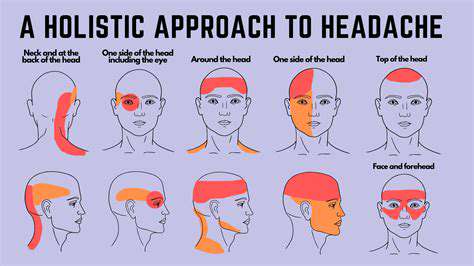Possible Causes of Right-Sided Head Pain

1. Tension Headaches
Tension headaches are one of the most common types of headaches and can cause stabbing pain on the right side of the head. They often develop due to stress, lack of sleep, or poor posture. Individuals experiencing tension headaches may feel a tightening sensation around their head, often misinterpreted as a stabbing pain. This pain usually starts gradually and can last from 30 minutes to several days. Identifying triggers like stress or muscle strain is essential to managing these headaches effectively.
Over-the-counter pain relievers such as ibuprofen or acetaminophen can help alleviate the discomfort. Additionally, practicing stress reduction techniques, such as deep breathing or meditation, may prevent future occurrences. Staying hydrated and maintaining a regular sleep schedule are also beneficial in managing these types of headaches. Incorporating regular physical activity can further enhance overall well-being and reduce the frequency of headaches.
If tension headaches are recurrent, consulting a healthcare professional might be necessary. A doctor can help rule out other potential causes and recommend appropriate treatment strategies. Adjusting lifestyle habits may significantly contribute to reducing headache episodes.
2. Migraine Attacks
Migraine attacks are another potential reason for Stabbing Pain localized on the right side of the head. These are often accompanied by other symptoms such as nausea, vomiting, and extreme sensitivity to light and sound. They can last anywhere from a few hours to several days, making them particularly debilitating. Migraines may be triggered by specific dietary choices, hormonal changes, or environmental factors. Recognizing personal triggers is crucial for effective management.
Management of migraines often involves a combination of medication and lifestyle changes. Prescription medications can help alleviate the pain during an attack, while preventive medications might be recommended for those with frequent episodes. Keeping a headache diary can assist individuals in identifying patterns and triggers. Ensuring adequate rest and practicing relaxation techniques can also minimize the severity and frequency of attacks.
In severe cases, where migraines significantly impact daily life, a healthcare provider may suggest advanced treatment options or therapies. Experimenting with natural remedies, such as essential oils or acupuncture, could provide additional relief for some individuals. Awareness and education about migraines are vital for managing this complex condition.
Associated Symptoms and When to Seek Help
Understanding Associated Symptoms
When experiencing stabbing pain on the right side of the head, it's essential to be aware of other accompanying symptoms that may help identify the underlying issue. Common associated symptoms can include nausea, sensitivity to light or sound, dizziness, and visual disturbances. These symptoms can provide crucial information to healthcare professionals during diagnosis.
In particular, symptoms like nausea and vomiting may indicate a more severe condition that requires immediate medical attention. For instance, conditions such as migraines or even more serious issues like a concussion can be accompanied by these distressing symptoms. Therefore, tracking and noting any additional signs can significantly assist in the evaluation process.
It's also important to recognize if symptoms are temporary or persistent. Persistent symptoms that worsen over time should never be ignored, as they may suggest a need for further investigation into the cause of the pain.
When to Seek Medical Help
Knowing when to seek medical help is critical, especially when experiencing stabbing pain on the right side of the head. If the pain is sudden and severe, it may warrant immediate attention. This is particularly important if it’s accompanied by additional symptoms such as confusion, loss of consciousness, or severe visual changes.
Another critical factor to consider is the frequency of episodes. If the stabbing pain becomes recurrent or is significantly impacting daily life or functionality, it is advisable to consult a healthcare professional. Persistent or frequent pain can often suggest underlying conditions that require treatment or management.
Additionally, individuals with a history of head trauma, neurological disorders, or serious health issues should be proactive in seeking help when they experience unusual or intense head pain. Early intervention is key to addressing potential health risks effectively.